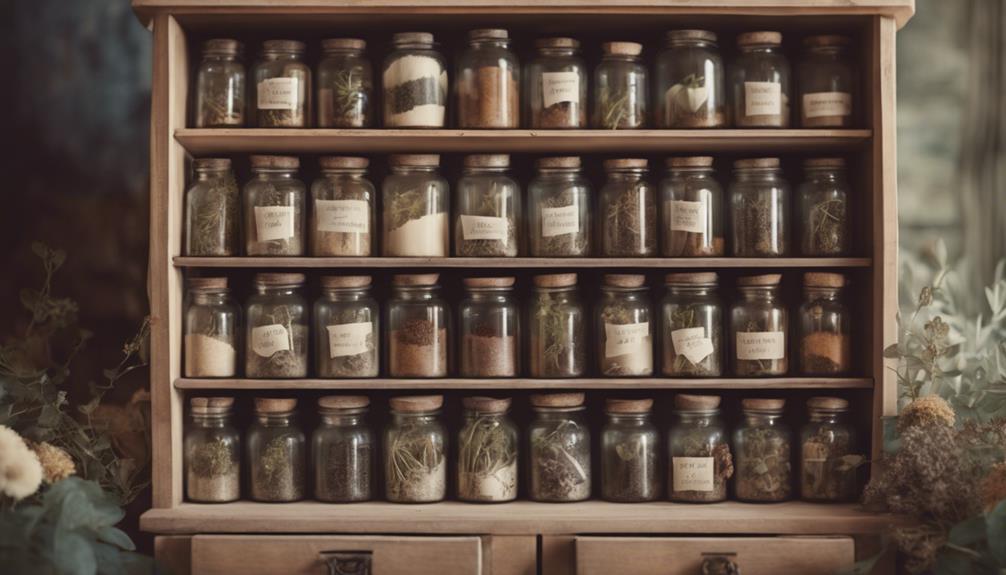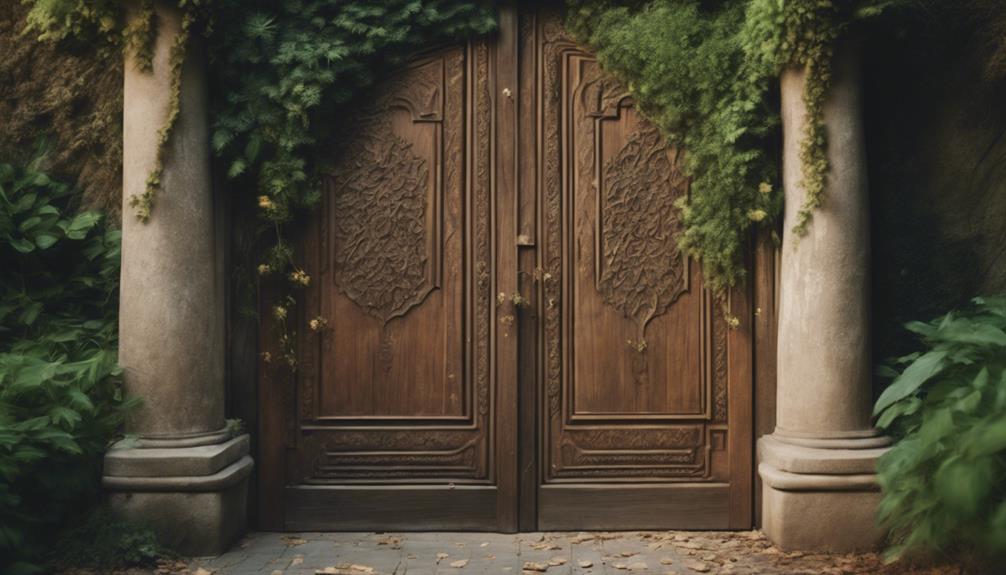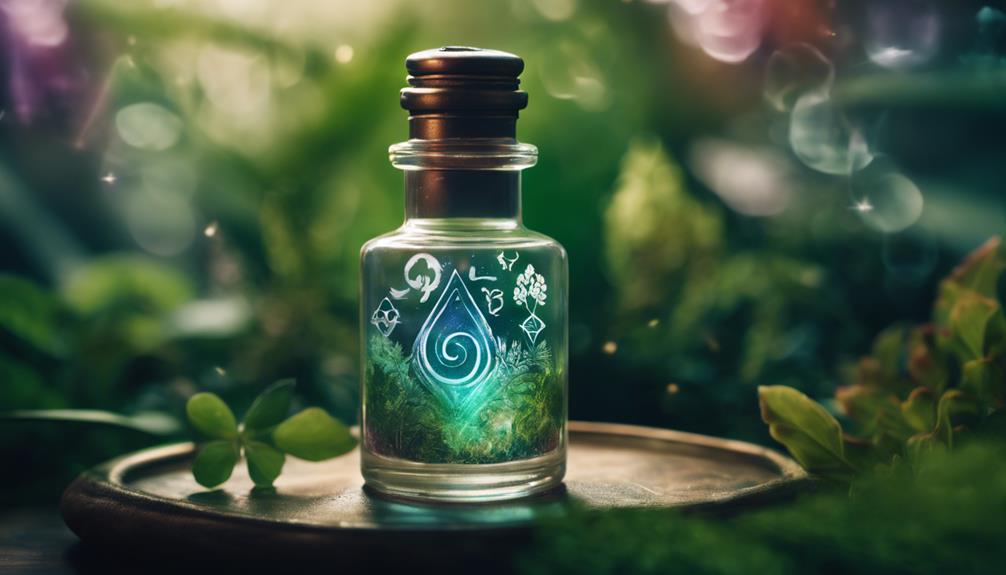As we begin our herbal journey, we'll start by building a solid foundation in the basics of herbalism. We'll select beginner-friendly herbs like peppermint, lavender, and chamomile, choosing ethically sourced and organically grown options. Understanding herbal actions like soothing, stimulating, or relaxing will help us make informed decisions about the herbs we work with. By grasping these fundamentals, we'll be well-equipped to explore herbal tinctures and oxymel recipes. From here, we can continue to cultivate our knowledge and skills, refining our practice and deepening our connection with nature.
Key Takeaways
• Start by selecting a dozen beginner-friendly herbs like peppermint, lavender, and chamomile, choosing ethically sourced and organically grown options.
• Understand basic herbal actions such as soothing, stimulating, or relaxing, and explore herbal tinctures and oxymel recipes.
• Invest in durable and hygienic tools like stainless steel and glass, and stock up on essential supplies like pots, double boilers, and measuring cups.
• Connect with herbal communities online and offline, participating in local herb walks, workshops, and classes to learn from others and share your own experiences.
• Prioritize sustainable practices by choosing responsibly sourced herbs, implementing ethical harvesting techniques, and promoting environmental stewardship.
Setting Up Your Herbal Journey
As we embark on our herbal journey, let's start by selecting a dozen beginner-friendly herbs to explore, including peppermint, lavender, and chamomile, which can be easily incorporated into our daily routine.
By choosing herbs that are easy to work with, we can guarantee a smooth shift into the world of herbalism. We'll want to opt for ethically sourced and organically grown herbs to secure the sustainability of our choices.
For beginners, it's crucial to understand the basic herbal actions of our chosen herbs, such as soothing, stimulating, or relaxing. This will help us grasp their properties and how they can be used to enhance our well-being.
To deepen our understanding of herbalism practices, we can explore herbal tinctures and oxymel recipes. By taking these initial steps, we'll set ourselves up for success in our herbal journey, empowering us to make informed decisions about the herbs we choose to work with.
Understanding Herbal Properties

Now that we've selected our beginner-friendly herbs, let's unpack the unique characteristics of each, including their taste, aroma, and therapeutic effects, to better understand how they can support our well-being. This is where understanding herbal properties becomes essential for selecting the right herbs for our specific health concerns or needs.
| Herbal Property | Description | Examples of Herbs |
|---|---|---|
| Diuretic | Increases urine production | Dandelion, Juniper |
| Anti-inflammatory | Reduces inflammation | Turmeric, Ginger |
| Sedative | Promotes relaxation | Chamomile, Lavender |
| Stimulant | Increases energy and alertness | Ginseng, Green Tea |
Building Your Herbal Toolkit

We're ready to stock our shelves with the essential tools and supplies that'll help us bring our herbal creations to life.
As we immerse ourselves into DIY herbal crafting, it's important to invest in durable and hygienic tools. Stainless steel and glass tools are our top picks for our herbal toolkit, ensuring our creations are free from contamination and last for a long time.
Essential supplies like pots, double boilers, measuring cups, and spoons are must-haves for our herbal preparation. We can also enhance our experience with additional tools like cheesecloth, mixing bowls, and spatulas.
When it comes to storing our finished products, let's think sustainable – repurposing containers is a great way to reduce waste.
To add an extra layer of therapeutic benefits and fragrance to our homemade herbal creations, we can opt for organic essential oils.
With our herbal toolkit in place, we're all set to create our own herbal remedies and products, and take our herbalism journey to the next level.
Navigating Herbal Communities

With our herbal toolkit in place, we're delving into the world of herbal communities, where we can tap into a wealth of knowledge, resources, and support to further our herbalism journey. As beginners, we're enthusiastic to learn and grow, and that's exactly what these communities offer.
Online forums and social media groups provide a platform to connect with like-minded individuals, ask questions, and share our experiences. We can also participate in local herb walks, workshops, and classes, which are invaluable for hands-on learning and skill-building. What's more, herbal communities often share resources, tips, and personal experiences, fostering a collaborative environment that's perfect for learning.
Cultivating Sustainable Practices

As we explore further into the world of herbalism, we're recognizing the importance of cultivating sustainable practices that not only promote environmental stewardship but also guarantee the long-term viability of our herbal traditions.
By adopting sustainable herbal practices, we can minimize our environmental impact and secure the continued availability of organic herbs for future generations. This involves choosing responsibly sourced herbs, implementing ethical harvesting techniques, and supporting biodiversity. We can contribute to sustainability by opting for abundant herbs that require minimal resources to cultivate.
By doing so, we're preserving the earth's resources and promoting a more conscious approach to healing. Ethical cultivation and harvesting practices are vital in maintaining the delicate balance of nature.
As we explore further into the world of herbalism, we're coming to realize that sustainable herbal practices aren't only an ethical obligation but also a necessity for the survival of our herbal traditions. By prioritizing sustainability, we can foster a deeper connection with nature and cultivate a more conscious approach to healing.
Frequently Asked Questions
How Do I Start Learning Herbalism?
We start learning herbalism by researching and experimenting with herbs, driven by curiosity and a desire to improve our health.
We begin by studying herbs for personal use, exploring their benefits and potential interactions.
As we gain knowledge, we can delve into community or clinical herbalism, always consulting medical professionals when needed.
With patience and dedication, we can discover the world of herbalism and harness its potential to enhance our well-being.
What Is the First Step in Becoming a Herbalist?
As we start on the fascinating journey of herbalism, we're often left wondering where to begin.
The initial step in becoming a herbalist, we've found, is to research and select a few key herbs to focus on for learning and experimentation.
This foundational step allows us to explore the world of herbalism, investigating their traditional uses, properties, and potential benefits for health and wellness.
How Do I Start Using Herbs as a Medicine?
We start using herbs as medicine by researching the medicinal properties of common herbs like peppermint, ginger, or chamomile.
We experiment with incorporating them into teas, infusions, or culinary dishes for daily health benefits.
Consulting with an herbalist or healthcare professional helps us understand how to use herbs effectively.
What Is Herb 101 Basics of Herbalism?
As we explore the world of herbalism, we begin with the basics. Herb 101 fundamentals include understanding the different types of herbalism, such as Ayurveda, Traditional Chinese Medicine, and Western herbalism.
We learn about the healing properties of herbs, how to identify and prepare them, and their uses in promoting overall well-being.
We also explore the importance of sourcing high-quality herbs and the potential interactions with medications.
Conclusion
As we commence on this herbal journey, remember that the seeds of knowledge we've sown will bloom into a garden of wellness.
Like a tender shoot, our understanding of herbalism will grow, nourished by curiosity and dedication.
May our path be lit by the wisdom of those who've come before us, guiding us towards a brighter, more sustainable future.










